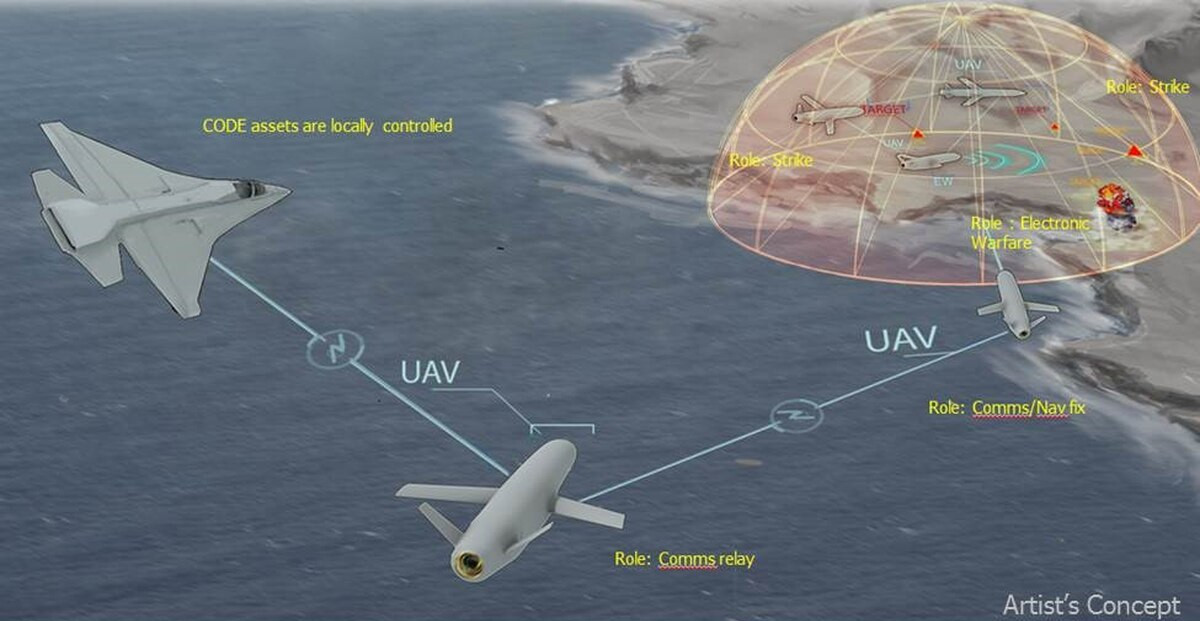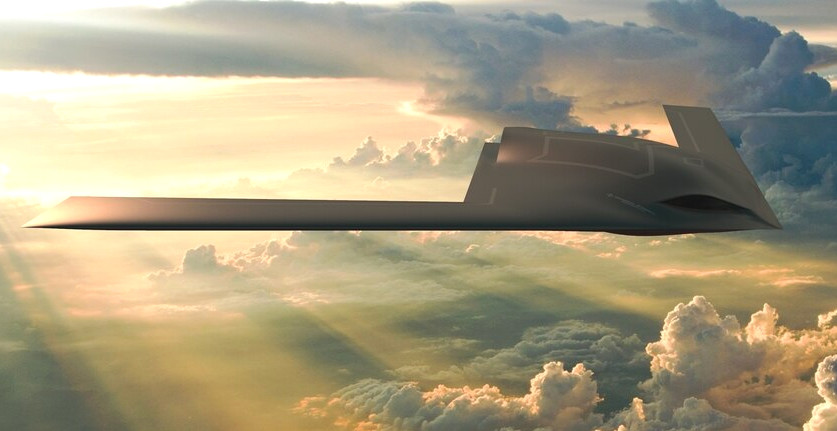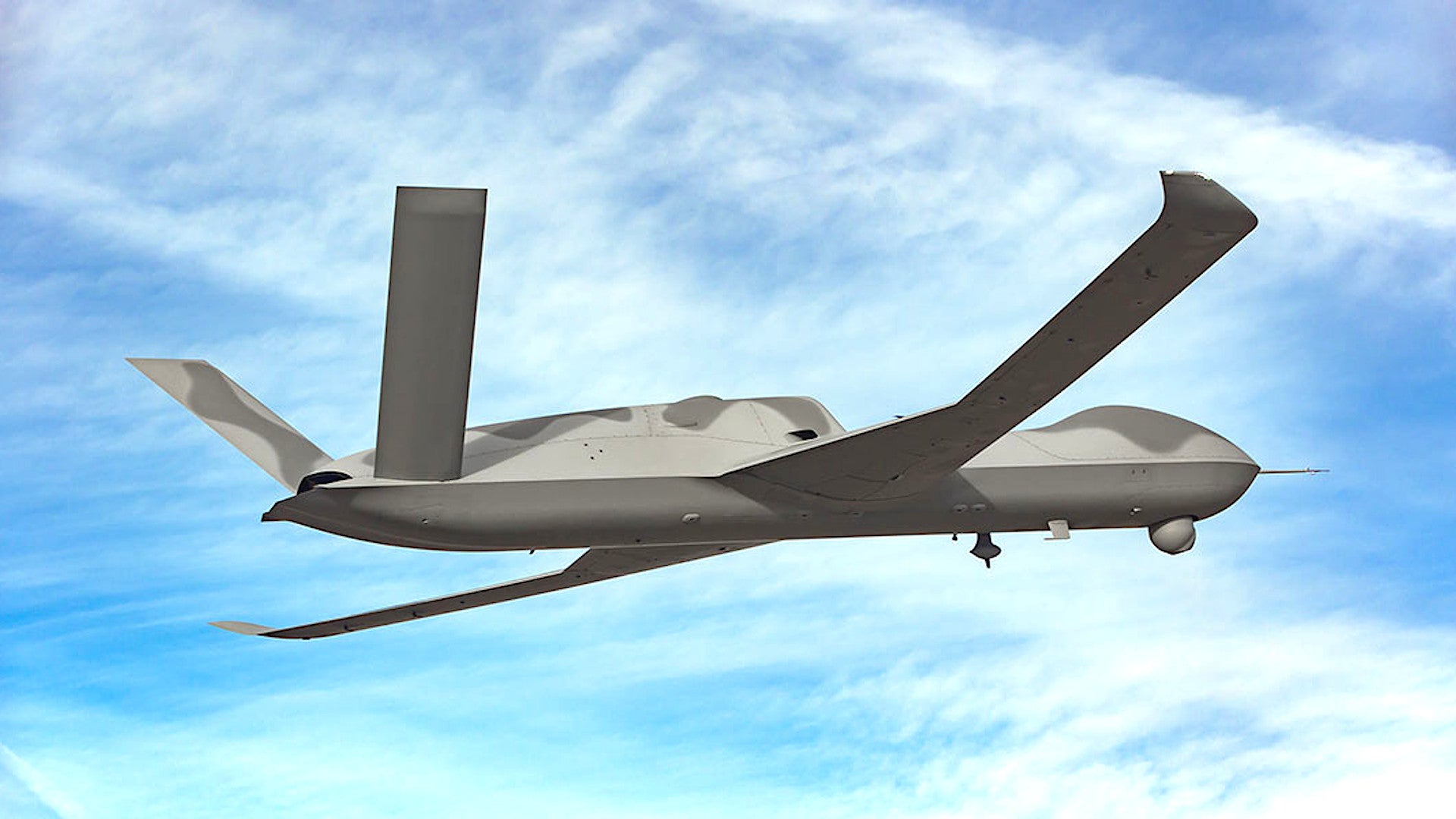General Atomics has revealed that it conducted a semi-autonomous flight test in October involving one of its stealthy Avenger drones equipped with an “autonomy engine” originally developed by the Defense Advanced Research Projects Agency and now managed by the U.S. Navy. The unmanned aircraft worked together with five other simulated Avengers to conduct a mock search for aerial threats in a designated area.
General Atomics Aeronautical Systems, Inc. issued a press release about the October demonstration on Dec. 4, 2020. The announcement did not say where the flight test had occurred. The company states that the demonstration also supports the work it is doing for the Air Force’s Skyborg program, which is seeking to develop a suite of artificial intelligence-driven systems that will be able to control networked “loyal wingman” type drones and fully autonomous unmanned combat air vehicles (UCAV).
“This represents a big step on the path to more sophisticated autonomous missions for unmanned aircraft,” GA-ASI President David Alexander said in a statement “Operator input can be minimized to support optimal manning of multiple products for complex air battles.”
The star of this particular demonstration was the company-owned Avenger equipped with the “autonomy engine” that the Defense Advanced Research Projects Agency (DARPA) had developed as part of its Collaborative Operations in Denied Environment (CODE) program. CODE dates back to at least 2014 and aimed “to focus in particular on developing and demonstrating improvements in collaborative autonomy – the capability of groups of UAS [unmanned aerial systems] to work together under a single person’s supervisory control,” according to an official project website.

As its name implies, CODE was also heavily geared toward developing systems that would still work “in denied or contested airspace,” especially in the face of significant electronic warfare jamming. “Using collaborative autonomy, CODE-enabled unmanned aircraft would find targets and engage them as appropriate under established rules of engagement, leverage nearby CODE-equipped systems with minimal supervision, and adapt to dynamic situations such as attrition of friendly forces or the emergence of unanticipated threats,” DARPA’s website says.
An official infographic, seen below, shows a notional advanced manned combat aircraft linked to autonomous unmanned platforms carrying out strikes and electronic warfare missions in a denied area via other drones acting as localized communications relays and navigation aids. Though the CODE concept did involve networking with manned aircraft, it also envisioned groups of drones using the systems developed to operate as fully-autonomous swarms, as well.

General Atomics’ October demonstration is not the first time CODE software has been used in an actual flight test. In February 2019, six Navy RQ-23 Tigershark drones flew a series of tests at the U.S. Army’s Yuma Proving Ground to see how well the system reacted to the appearance of various “virtual targets, threats, and countermeasures,” according to DARPA. Later that year, Naval Air Systems Command (NAVAIR) took full ownership of the CODE software database.

However, in this more recent test, General Atomics did develop additional algorithms for CODE to support “behavioral functions for a coordinated air-to-air search.” During the demonstration, a human operator then instructed the Avenger and its five virtual wingmen to carry out the aerial search mission, which they then performed autonomously. The CODE “engine” flew the physical Avenger drone for more than two hours, according to the company’s press release.
It’s interesting to note that the instructions from the human operator were sent to the drone using a Tactical Targeting Network Technology (TTNT) radio via the well-established Link16 waveform. The Navy developed TTNT first for the EA-18G Growler and it is now a key component of the service’s Block III upgrade package for its F/A-18E/F Super Hornets. In 2016, a U.S. Marine Corps AV-8B Harrier jump jet notably used a TTNT data link to share information with a Kratos Unmanned Tactical Aerial Platform-22 (UTAP-22) Mako drone acting as a “loyal wingman.”
General Atomics says that the demonstration supported other work outside of continued experimentation with the CODE system, as well. “The CODE autonomy engine was implemented to further understand cognitive Artificial Intelligence (AI) processing on larger UAS platforms, such as Avenger,” according to the General Atomics press release.
“For this initial flight, we used Avenger as the flight surrogate for the Skyborg capability set, which is a key focus for GA-ASI emerging air-to-air portfolio,” GA-ASI President Alexander added.

The Air Force Research Laboratory’s (AFRL) Skyborg program, which you can read about in more detail in this past War Zone piece, is perhaps the best known of multiple projects focused on AI-driven autonomous capabilities, especially for unmanned aircraft, presently ongoing through the U.S. military. The AFRL Autonomy Capability Team 3 (ACT3) is separately working on a suite of systems it hopes will able to autonomous control a drone in a real-life dogfight with a manned aircraft in 2024. ACT3 had originally hoped to be ready to conduct this demonstration next year.
In August, an AI-driven “pilot” notably went undefeated against a human opponent in an entirely simulated dogfight as part of DARPA’s AlphaDogfight Trials. This project is tied to the Agency’s larger Air Combat Evolution (ACE) program, which is exploring how AI and machine learning could help automate various aspects of aerial combat, both with regards to manned and unmanned platforms. In a manned context, this could include the integration of a “virtual co-pilot” to help reduce the burdens on human aircrew and speed up their decision making processes.

The test of the Avenger ability to use CODE to carry out an air-to-air mission that, had it been real, could have seen the drone and its wingmen autonomously detect threats and pass that information off to other platforms, or engage them directly, is certainly an important step forward in this field of research and development. It certainly underscores the kind of capabilities the Air Force and the Navy are looking to add to future aerial combat aircraft fleets, which both services say will include a mixture of manned and unmanned types. The Air Force said in September that some form of demonstrator aircraft had flown in support of its Next Generation Air Dominance (NGAD) future air combat program, which is, right now, primarily seeking to develop various technologies that go into future manned and unmanned combat aircraft.
It’s also an important demonstration of General Atomics’ technological capacity, especially as the Air Force looks to end purchases of its flagship product, the MQ-9 Reaper. A number of new foreign sales of Reapers and derivatives are now on the horizon, but the company is already looking ahead to competing for new U.S. military drone-related contracts, including Skyborg, as well as the Air Force’s MQ-9 replacement effort, known as MQ-Next.
Autonomous capabilities, as well as systems that utilized AI and machine learning, are likely to be increasingly important requirements for any U.S. military drone program as time goes on. In September, General Atomics announced it had conducted another flight test involving an MQ-9 carrying an AI-driven targeting system, known as Agile Condor, that is designed to help automatically spot and track, as well as categorize objects of interest. You can read more about that technology in this past War Zone piece.
The Avenger, also known as Predator C, was itself once considered as a potential MQ-9 replacement, but the Air Force declined to pursue it, at least publicly. A small number of these drones have enjoyed a more secretive career, either with that service or the Central Intelligence Agency, or both, something you can read about in more detail in this past War Zone piece. General Atomics continues to market advanced versions of the Avenger, but it has proposed a clean-sheet stealthy flying wing-type design for MQ-Next.

All told, this newly disclosed October flight test is another important step forward in autonomous aerial combat developments that looks set to have far-reaching impacts for the U.S. military and General Atomics.
Contact the author: joe@thedrive.com
